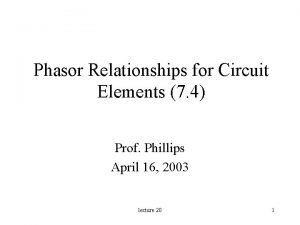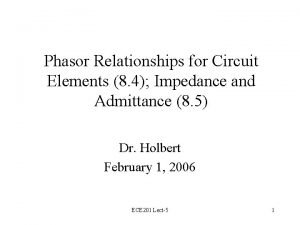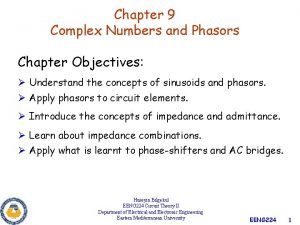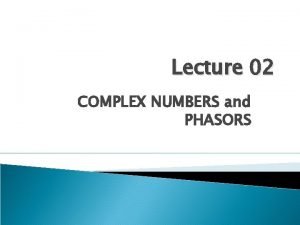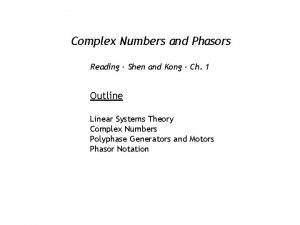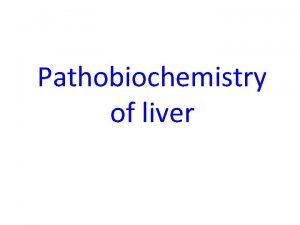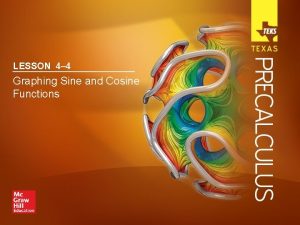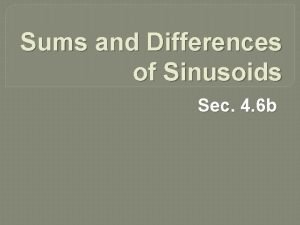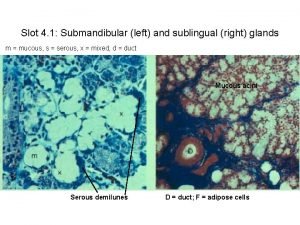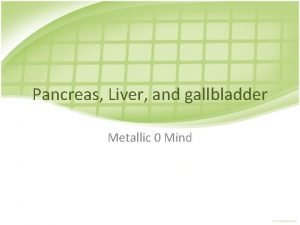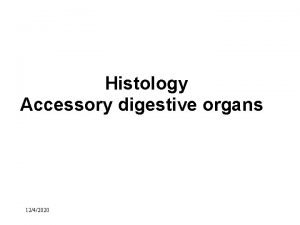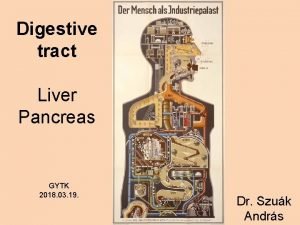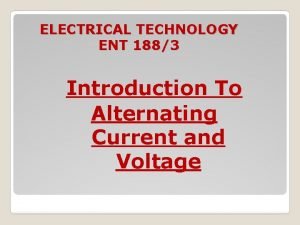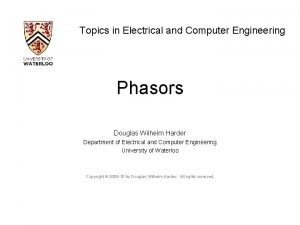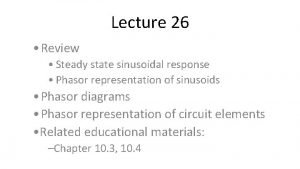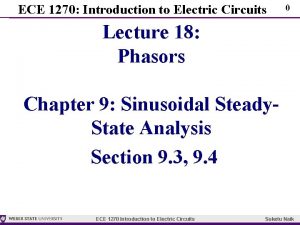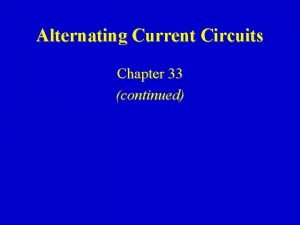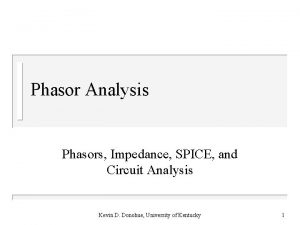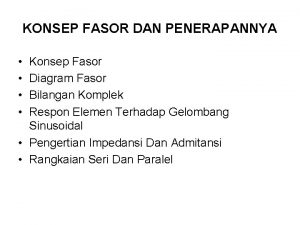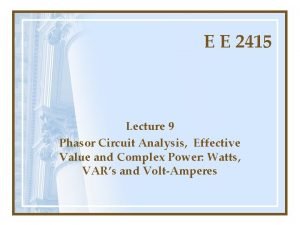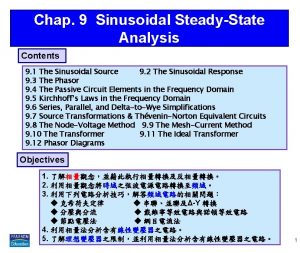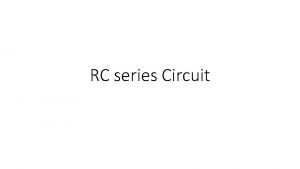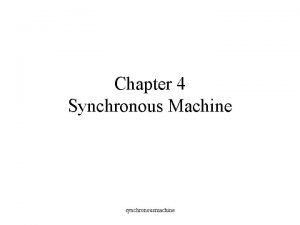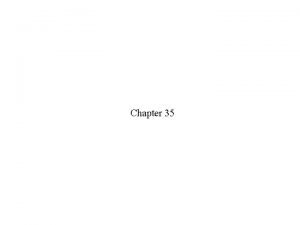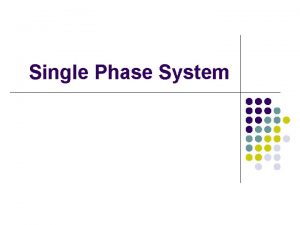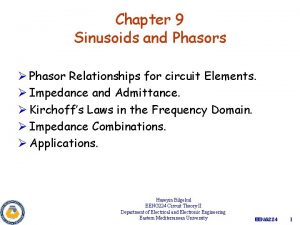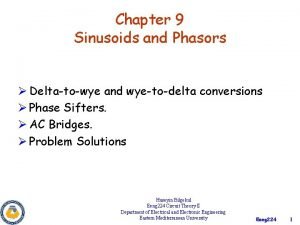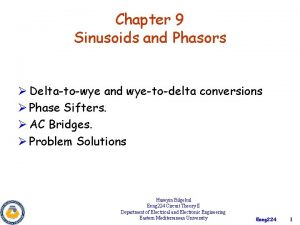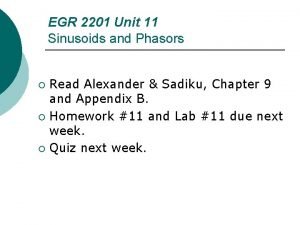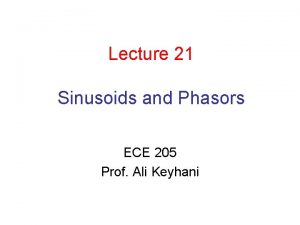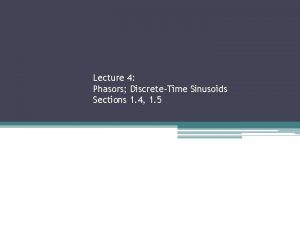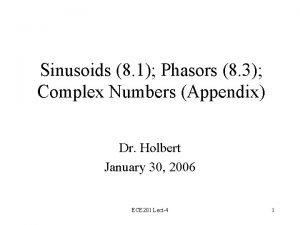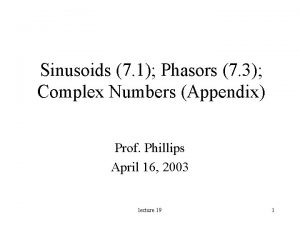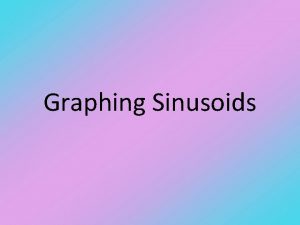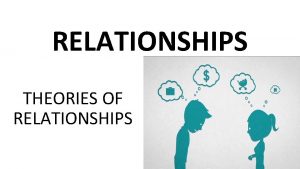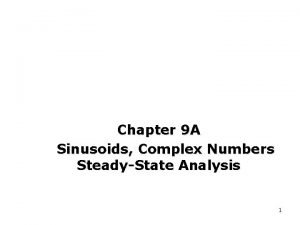Chapter 9 Sinusoids and Phasors Phasor Relationships for


























- Slides: 26

Chapter 9 Sinusoids and Phasors Ø Phasor Relationships for circuit Elements. Ø Impedance and Admittance. Ø Kirchoff’s Laws in the Frequency Domain. Ø Impedance Combinations. Ø Applications. Huseyin Bilgekul EENG 224 Circuit Theory II Department of Electrical and Electronic Engineering Eastern Mediterranean University EENG 224 1

Phasor Relationships for Circuit Elements Ø After we know how to convert RLC components from time to phasor domain, we can transform a time domain circuit into a phasor/frequency domain circuit. Ø Hence, we can apply the KCL laws and other theorems to directly set up phasor equations involving our target variable(s) for solving. Ø Next we find the phasor or frequency domain equivalent of the element equations for RLC elements. EENG 224 2

Phasor Relationships for Circuit Elements Phasor voltage and current of a resistor are in phase Time Domain Frequency Domain EENG 224 3

Phasor Relationship for Resistor Frequency Domain Voltage and current of a resistor are in phase Time Domain EENG 224 4

Phasor Relationships for Inductor Phasor current of an inductor LAGS the voltage by 90 degrees. Time Domain Frequency Domain EENG 224 5

Phasor Relationships for Inductor Frequency Domain Phasor current of an inductor LAGS the voltage by 90 degrees. Time Domain EENG 224 6

Phasor Relationships for Capacitor Time Domain Phasor current of a capacitor LEADS Frequency Domain the voltage by 90 degrees. EENG 224 7

Phasor Relationships for Capacitor Frequency Domain Phasor current of a capacitor LEADS the voltage by 90 degrees. Time Domain EENG 224 8

Phasor Relationships for Circuit Elements EENG 224 9

Phasor Relationships for Circuit Elements EENG 224 10

Impedance and Admittance Ø The Impedance Z of a circuit is the ratio of phasor voltage V to the phasor current I. Ø The Admitance Y of a circuit is the reciprocal of impedance measured in Simens (S). Ø Impedances and Admitances of passive elements. EENG 224 11

Impedance as a Function of Frequency Ø The Impedance Z of a circuit is a function of the frequency. Ø Inductor is SHORT CIRCUIT at DC and OPEN CIRCUIT at high frequencies. Capacitor is OPEN CIRCUIT at DC and SHORT CIRCUIT at high frequencies. EENG 224 12

Impedance of Joint Elements Ø The Impedance Z represents the opposition of the circuit to the flow of sinusoidal current. Z + V I - Ø The Reactance is Inductive if X is positive and it is Capacitive if X is negative. EENG 224 13

Impedance as a Function of Frequency Ø As the applied frequency increases, the resistance of a resistor remains constant, the reactance of an inductor increases linearly, and the reactance of a capacitor decreases nonlinearly. Reactance of inductor versus frequency Reactance of capacitor versus frequency EENG 224 14

Z EENG 224 15

Admittance of Joint Elements Ø The Admittance Y represents the admittance of the circuit to the flow of sinusoidal current. The admittance is measured in Siemens (s) + Y I V - EENG 224 16

Application of KVL for Phasors Ø The Kirchoff”s Voltage Law (KVL) holds in the frequency domain. For series connected impedances: Ø The Voltage Division for two elements in series is: EENG 224 17

Parallel Combination for Phasors Ø The Kirchoff”s Voltage Law (KVL) holds in the frequency domain. For series connected impedances: Ø The Current Division for two elements is: EENG 224 18

Z 3 Z 1 EENG 224 19

EENG 224 20

Application of Current Division for Phasors EENG 224 21

Application of Current Division for Phasors EENG 224 22

Example EENG 224 23

EENG 224 24

EENG 224 25

Z 1 EENG 224 26
 Eli the ice man
Eli the ice man Eli the ice man
Eli the ice man Complex number phasor
Complex number phasor Addition and subtraction of phasors
Addition and subtraction of phasors Adding polar form
Adding polar form Ali sepahdari
Ali sepahdari Central vein liver
Central vein liver Lesson 4 the sine function
Lesson 4 the sine function Tell whether or not is a sinusoid.
Tell whether or not is a sinusoid. Liver central vein
Liver central vein Sinusoids
Sinusoids Histology of accessory digestive organs
Histology of accessory digestive organs Ductus choledochus
Ductus choledochus Vrms to vpp
Vrms to vpp Phasors in electrical engineering
Phasors in electrical engineering Steady state sinusoidal analysis using phasors
Steady state sinusoidal analysis using phasors Phasors
Phasors Alternating circuit
Alternating circuit Phasor diagram
Phasor diagram Phasor notation
Phasor notation Pengertian fasor
Pengertian fasor Phasor circuit analysis example
Phasor circuit analysis example Phasor value
Phasor value Phasor diagram of rc series circuit
Phasor diagram of rc series circuit Phasor diagram synchronous motor
Phasor diagram synchronous motor The analysis of ac circuits uses a rotating vector called a
The analysis of ac circuits uses a rotating vector called a In purely resistive circuit, i &v are
In purely resistive circuit, i &v are
